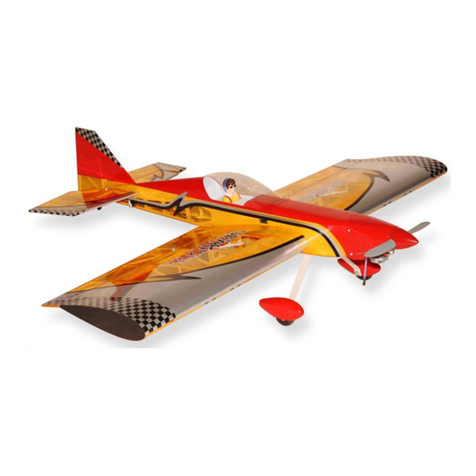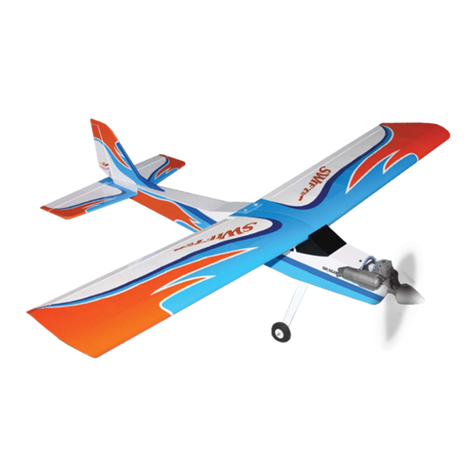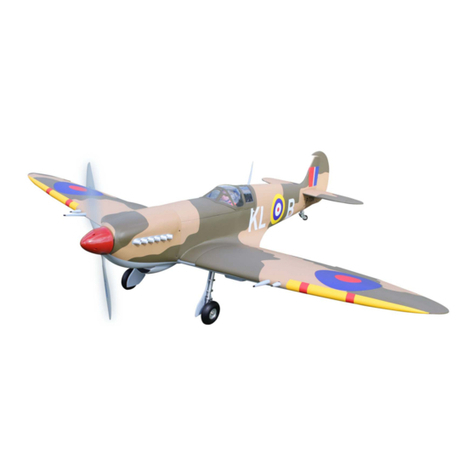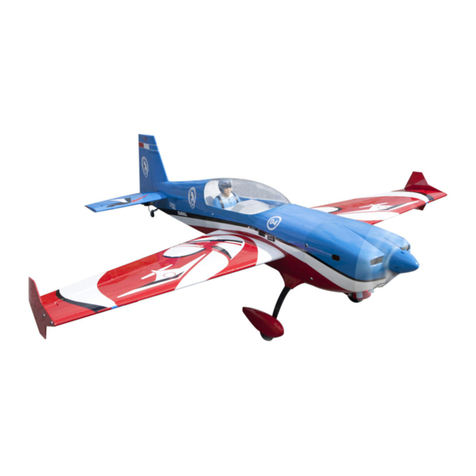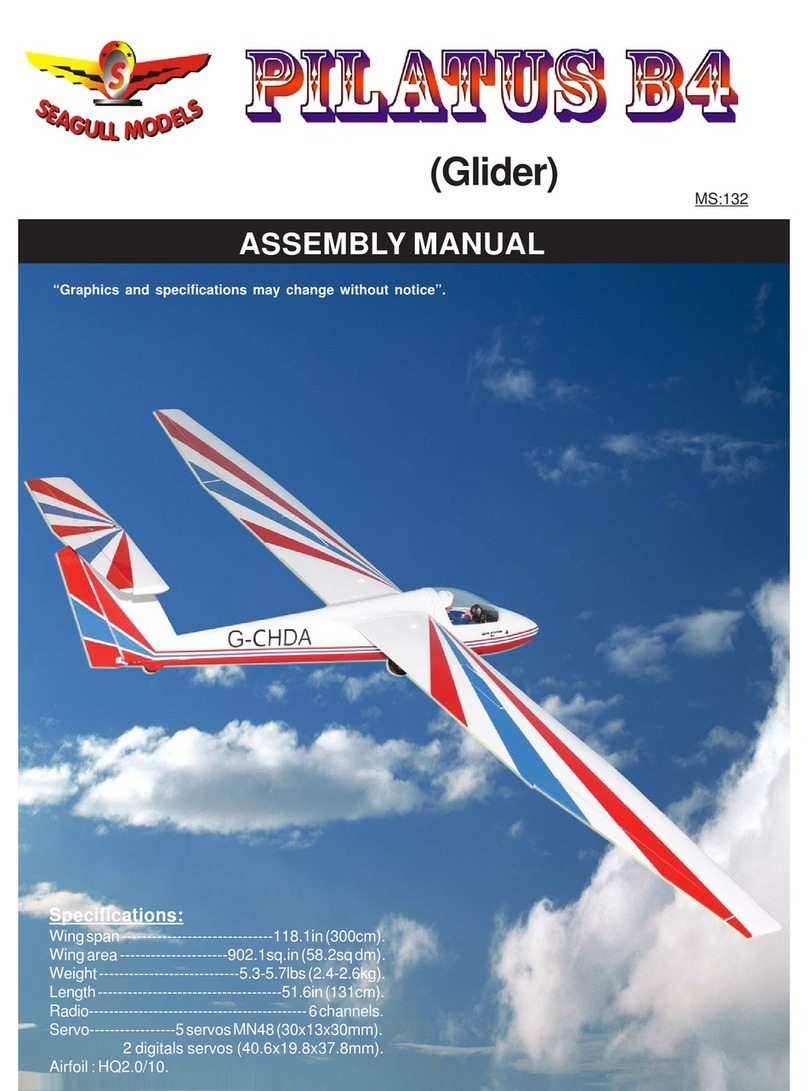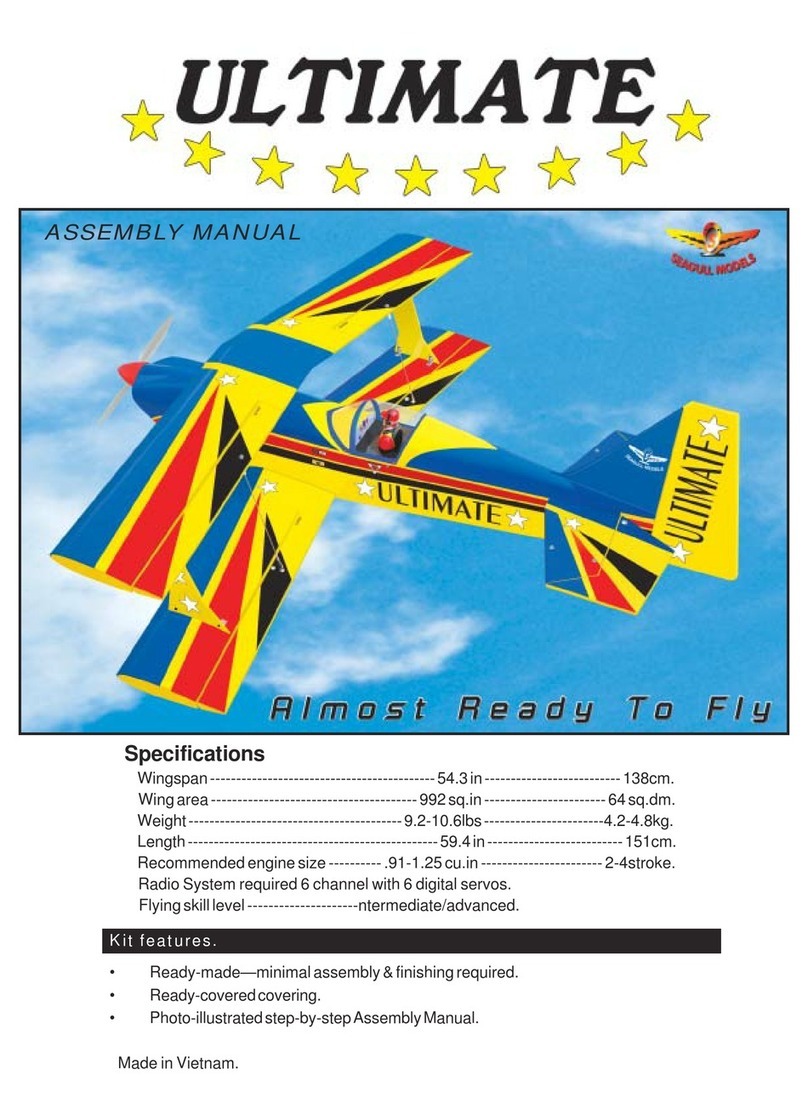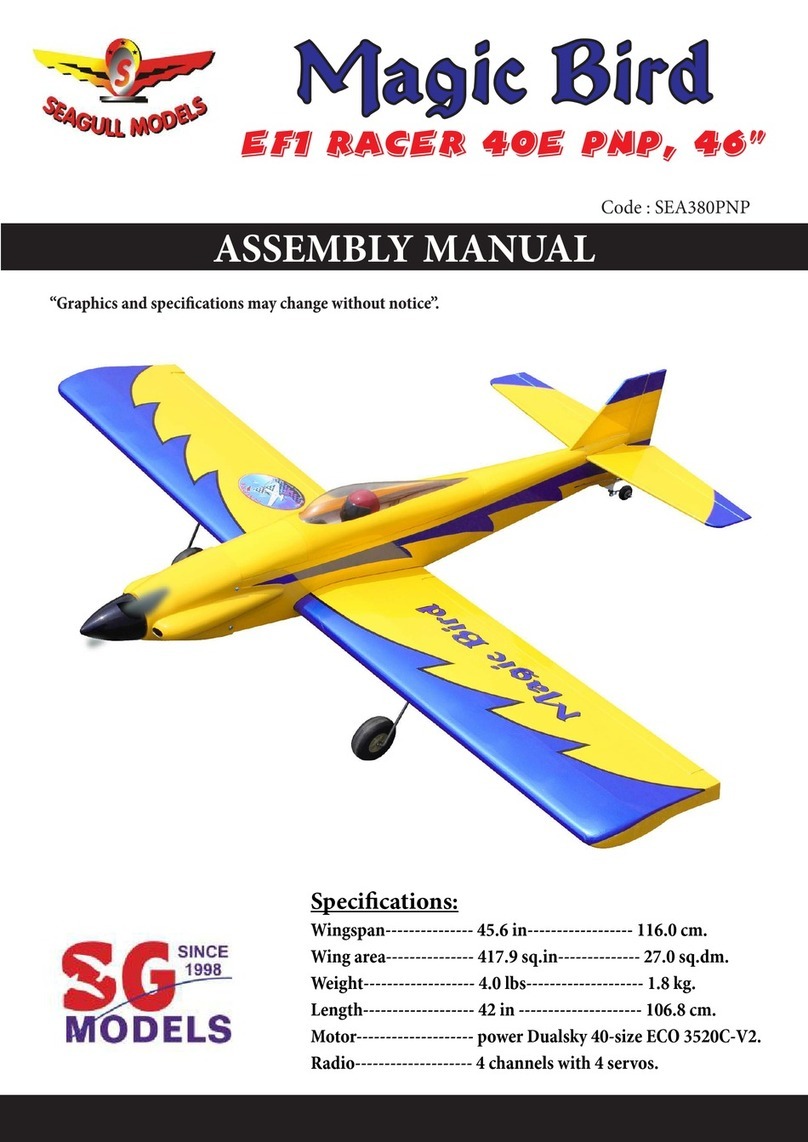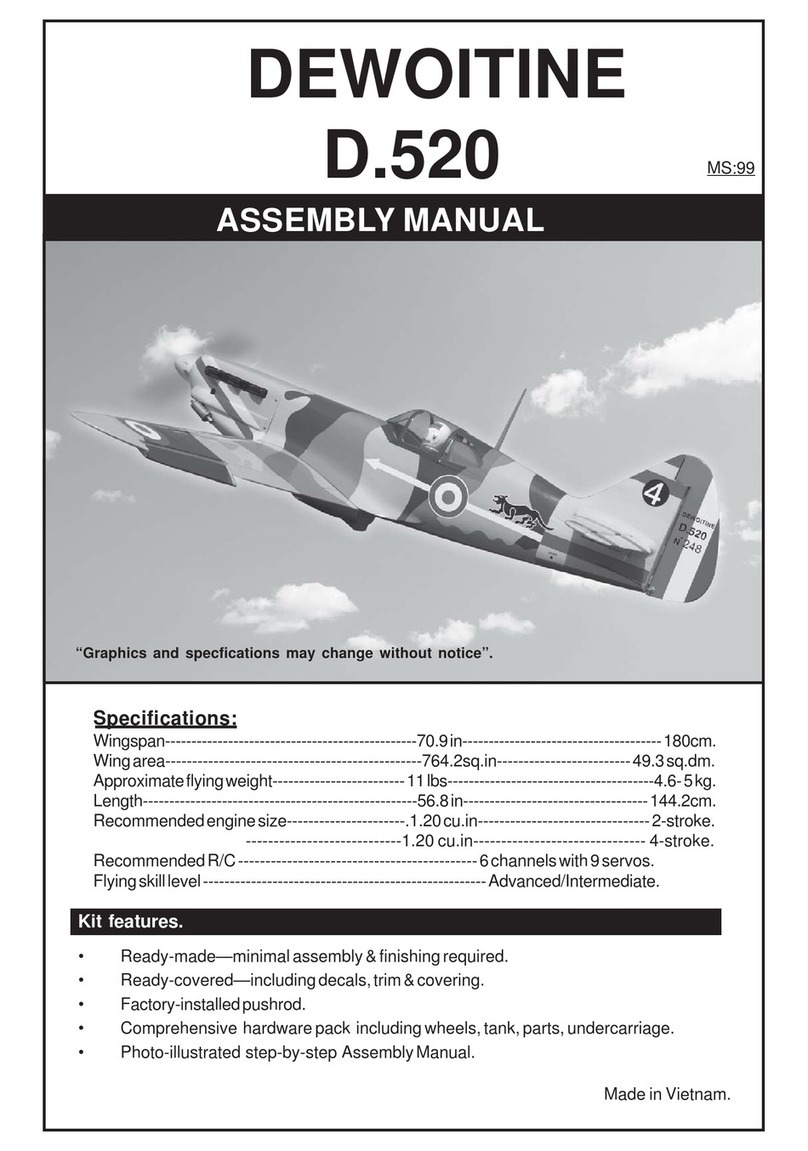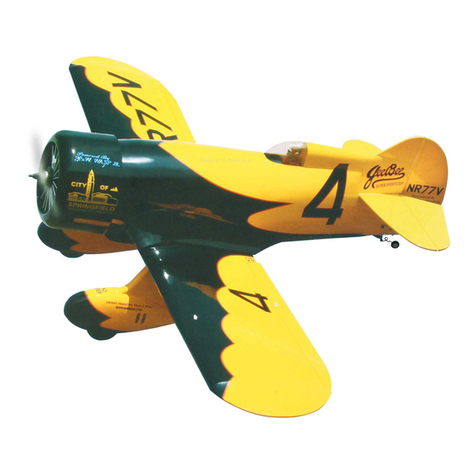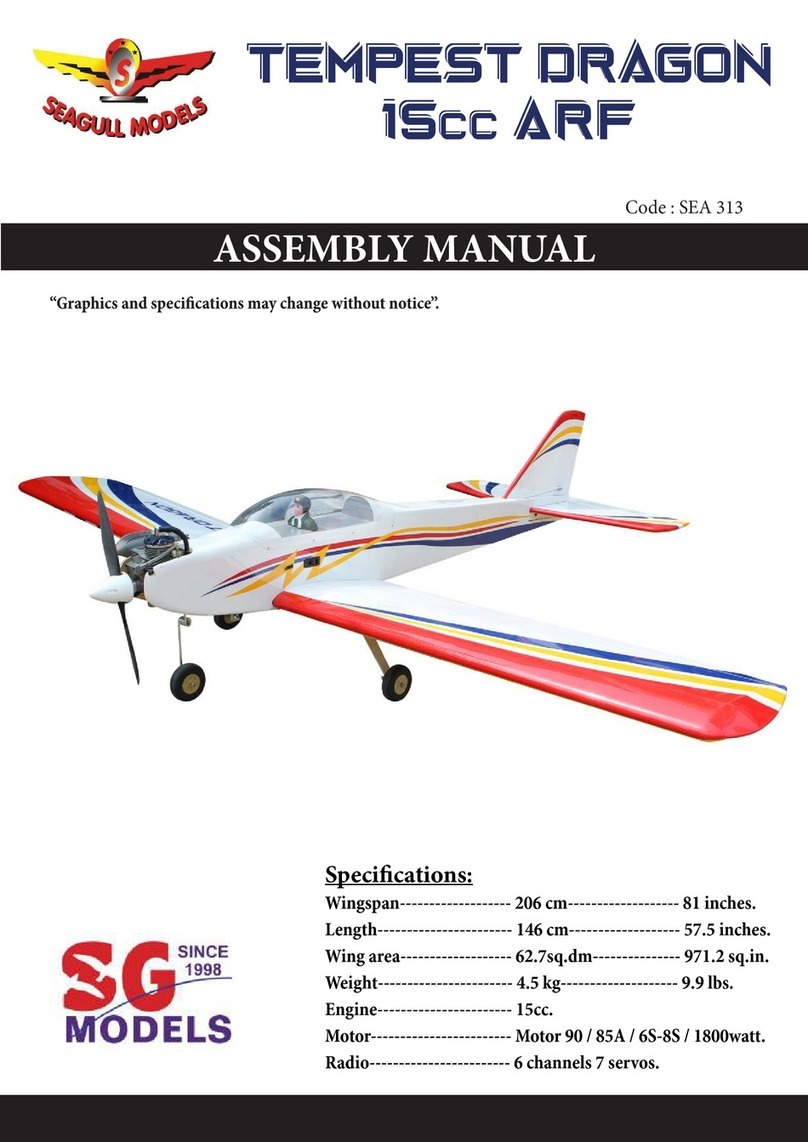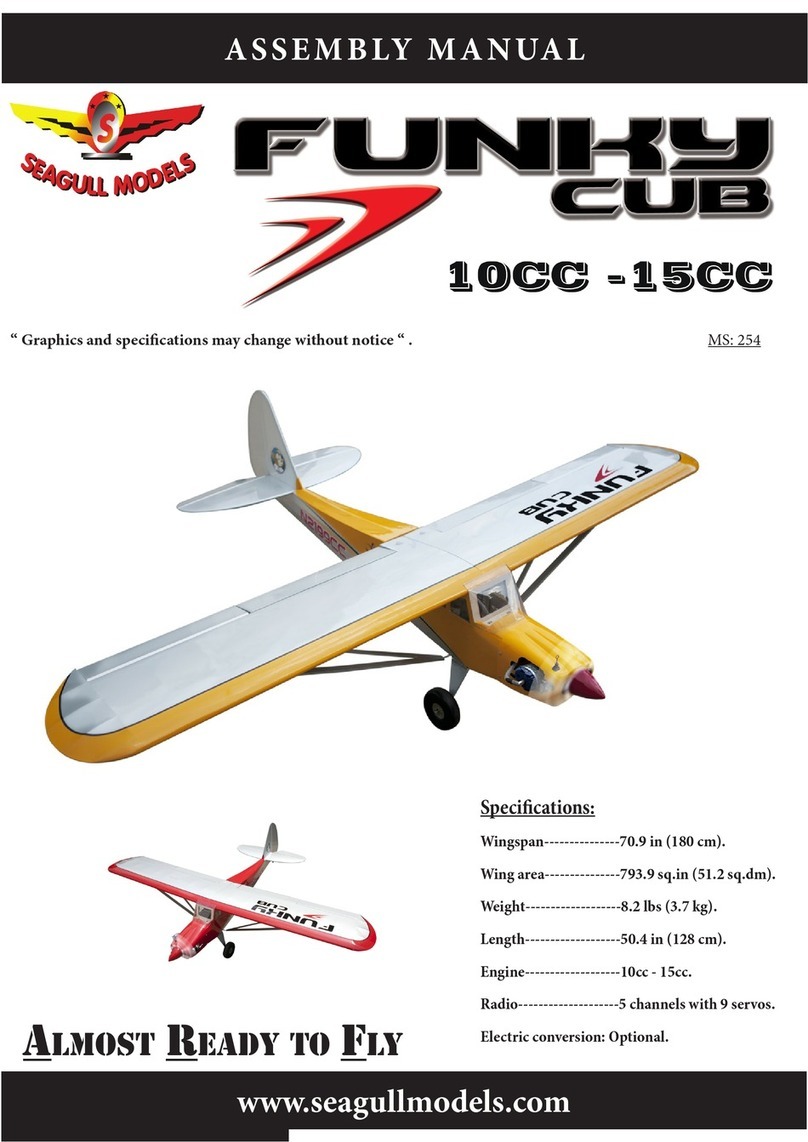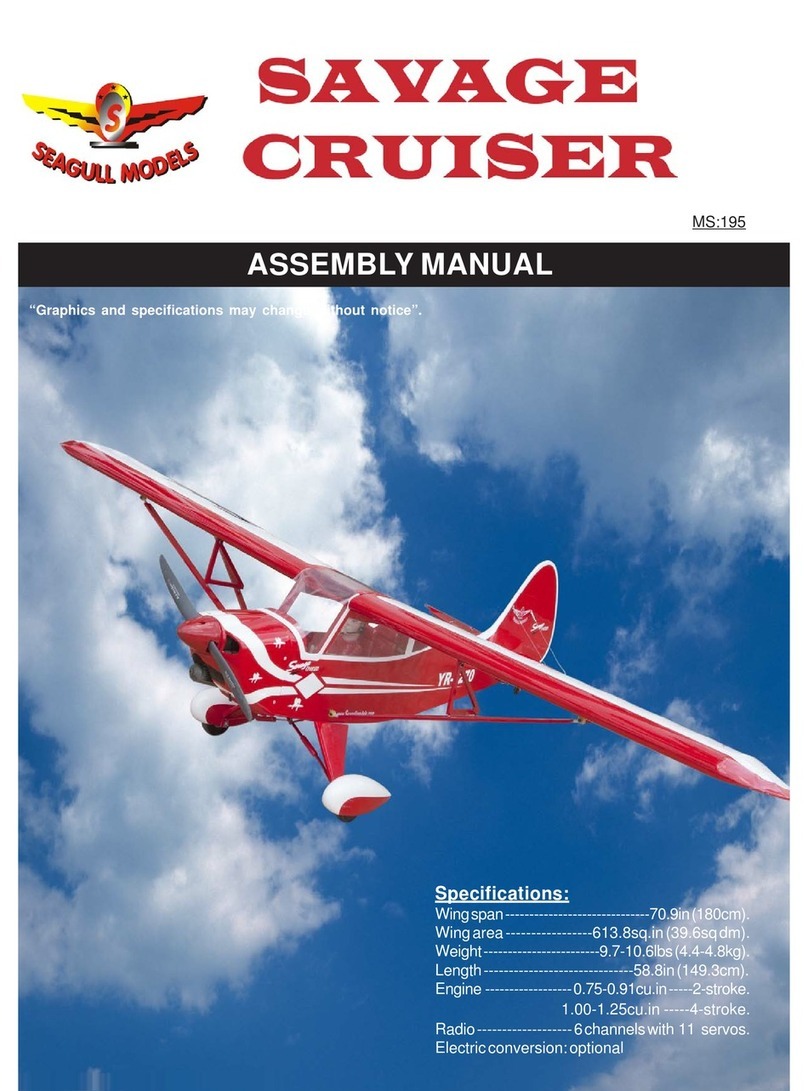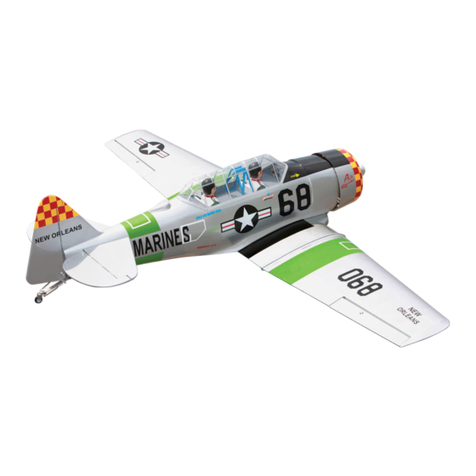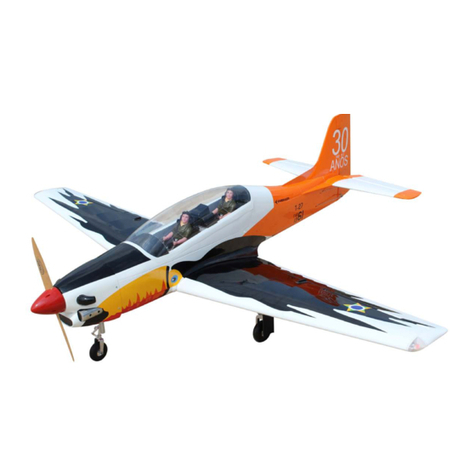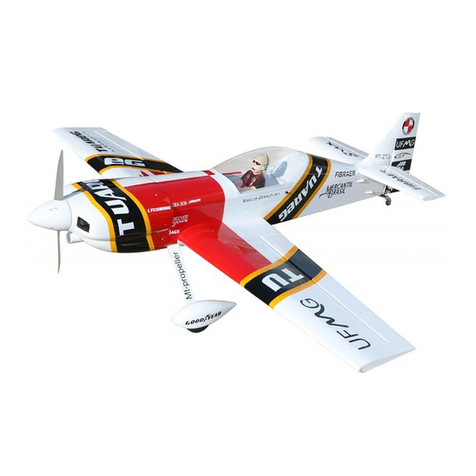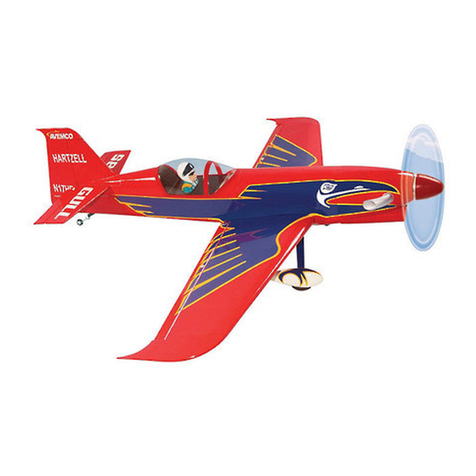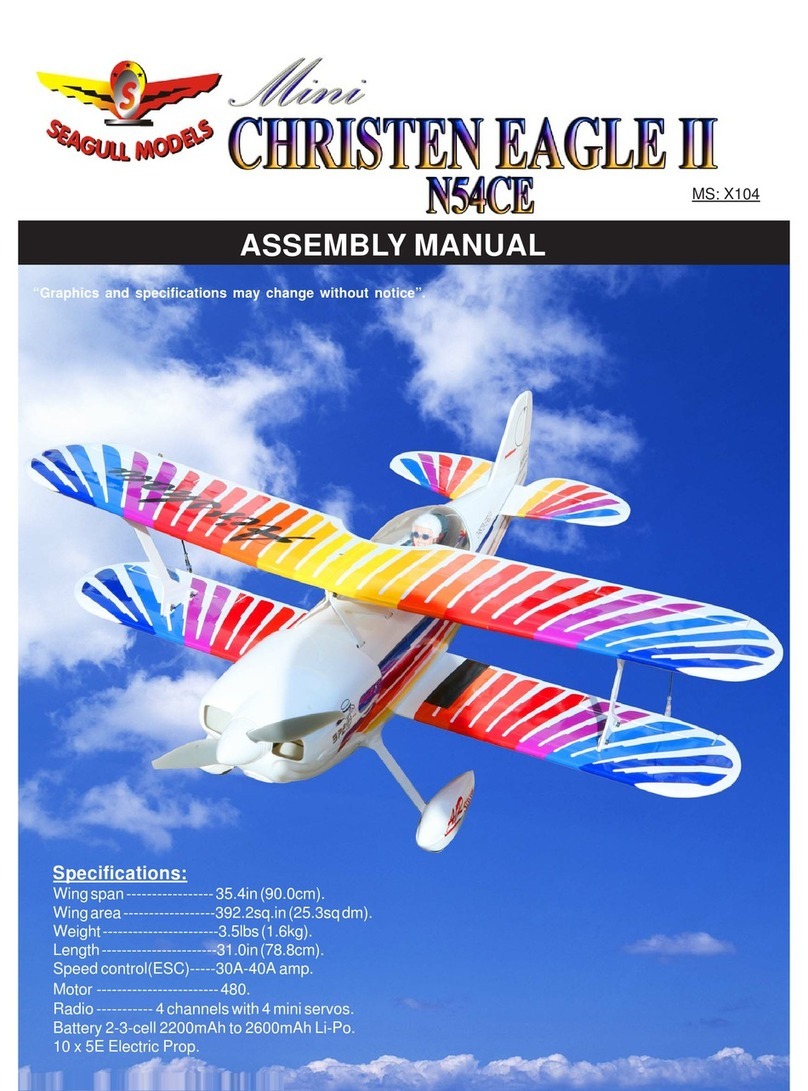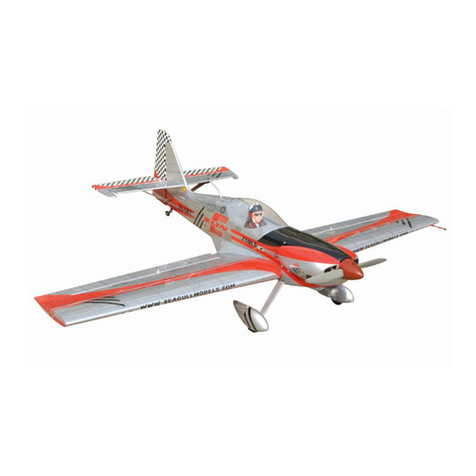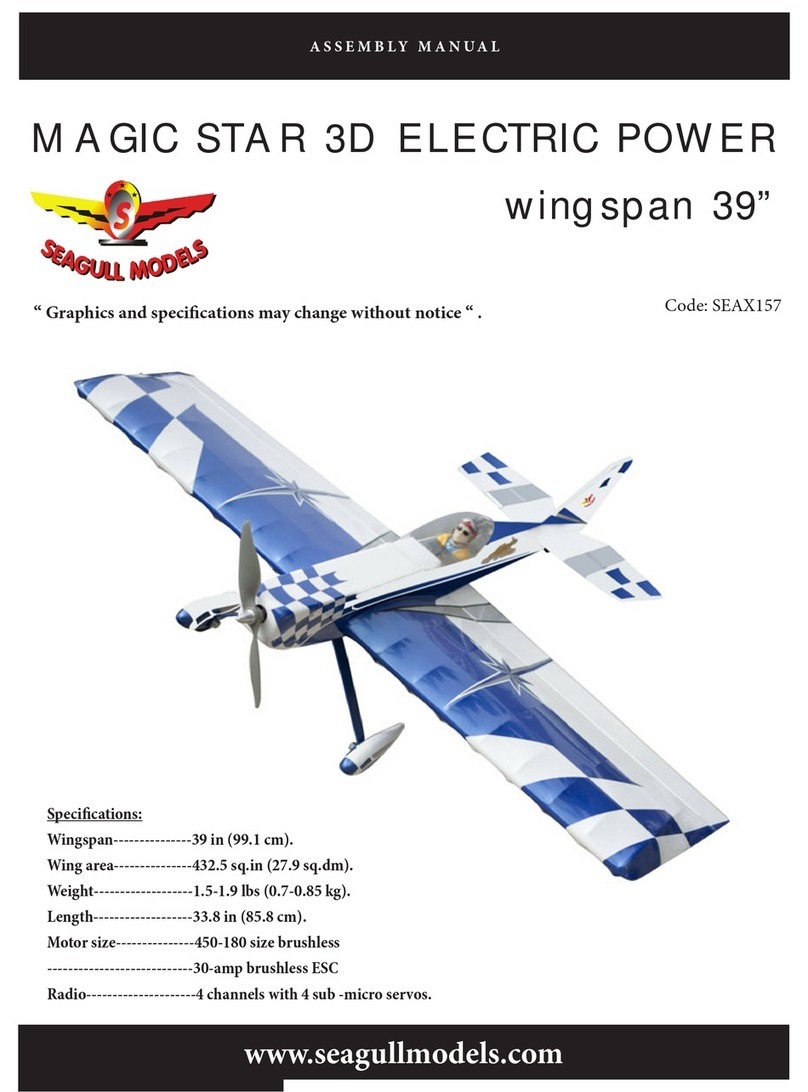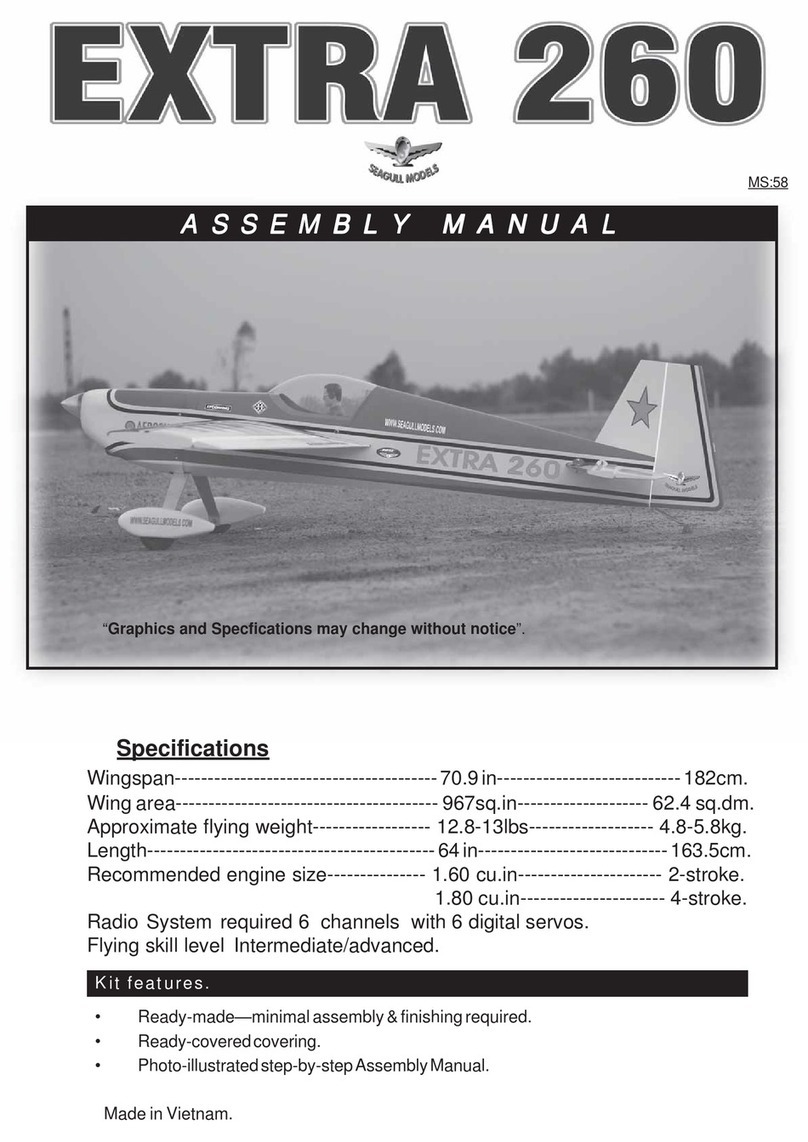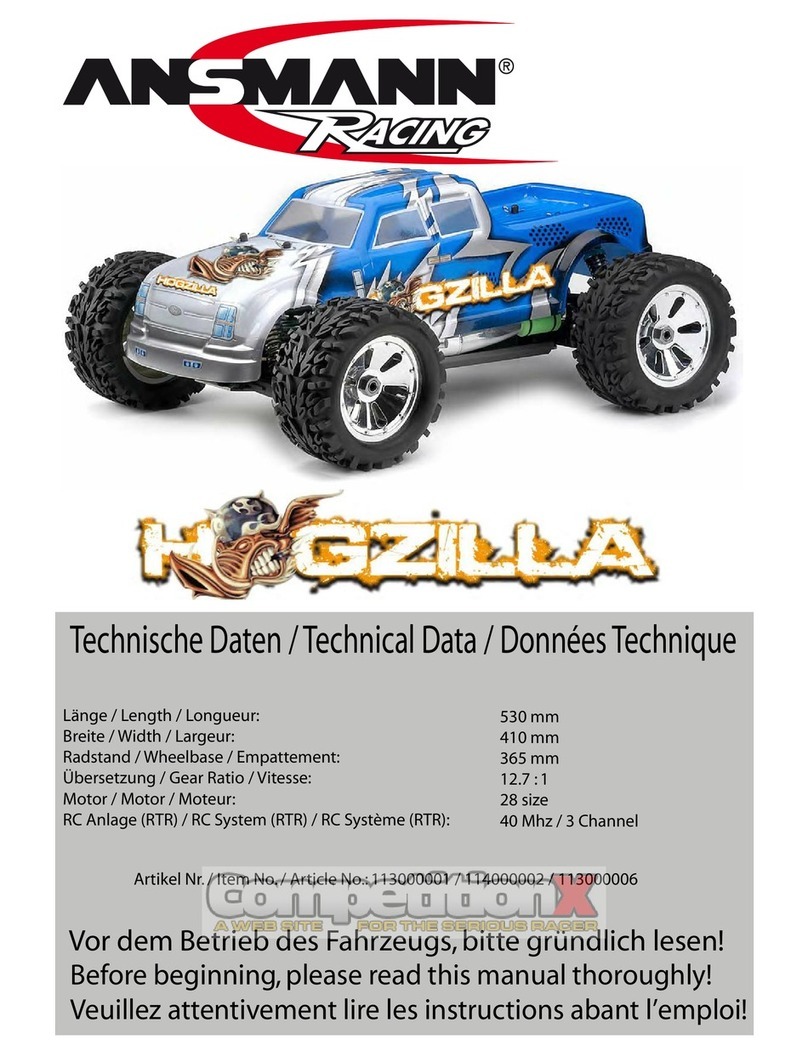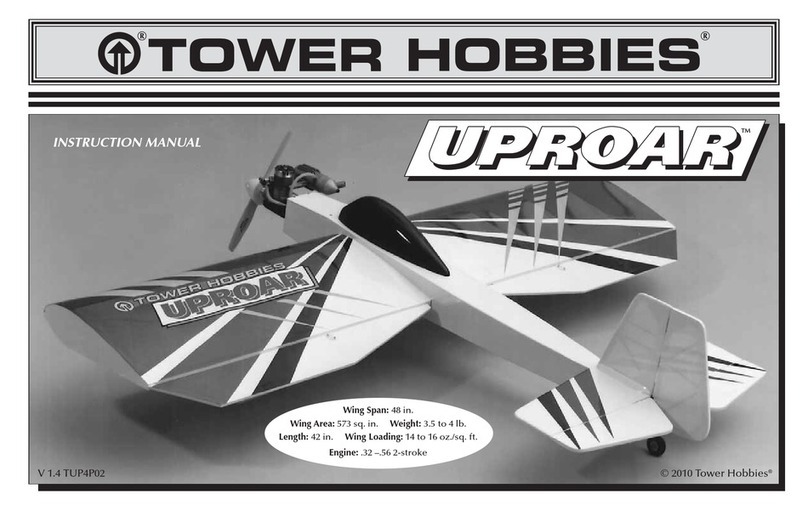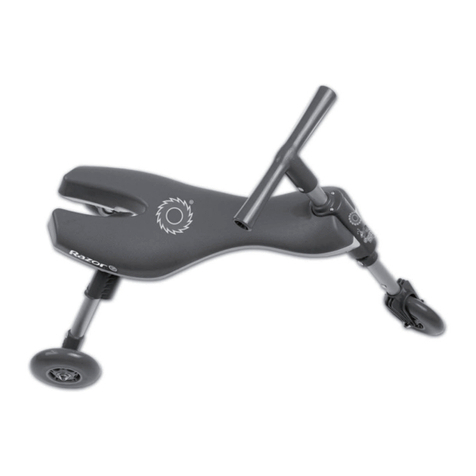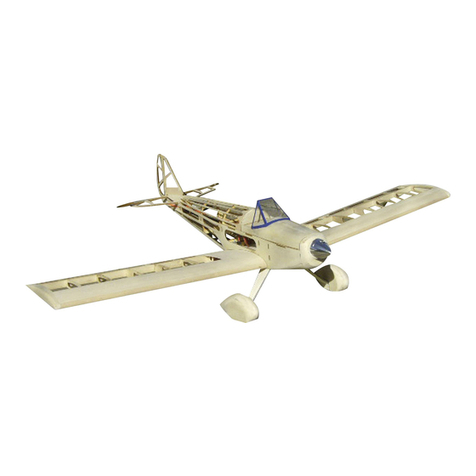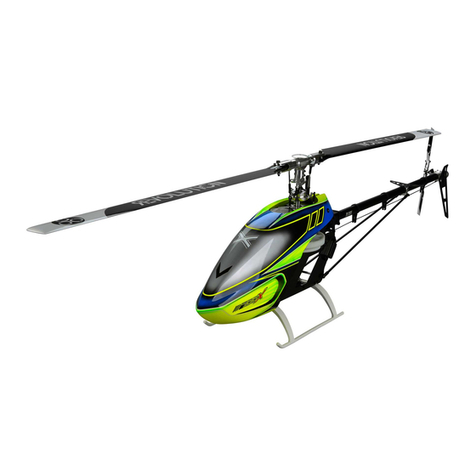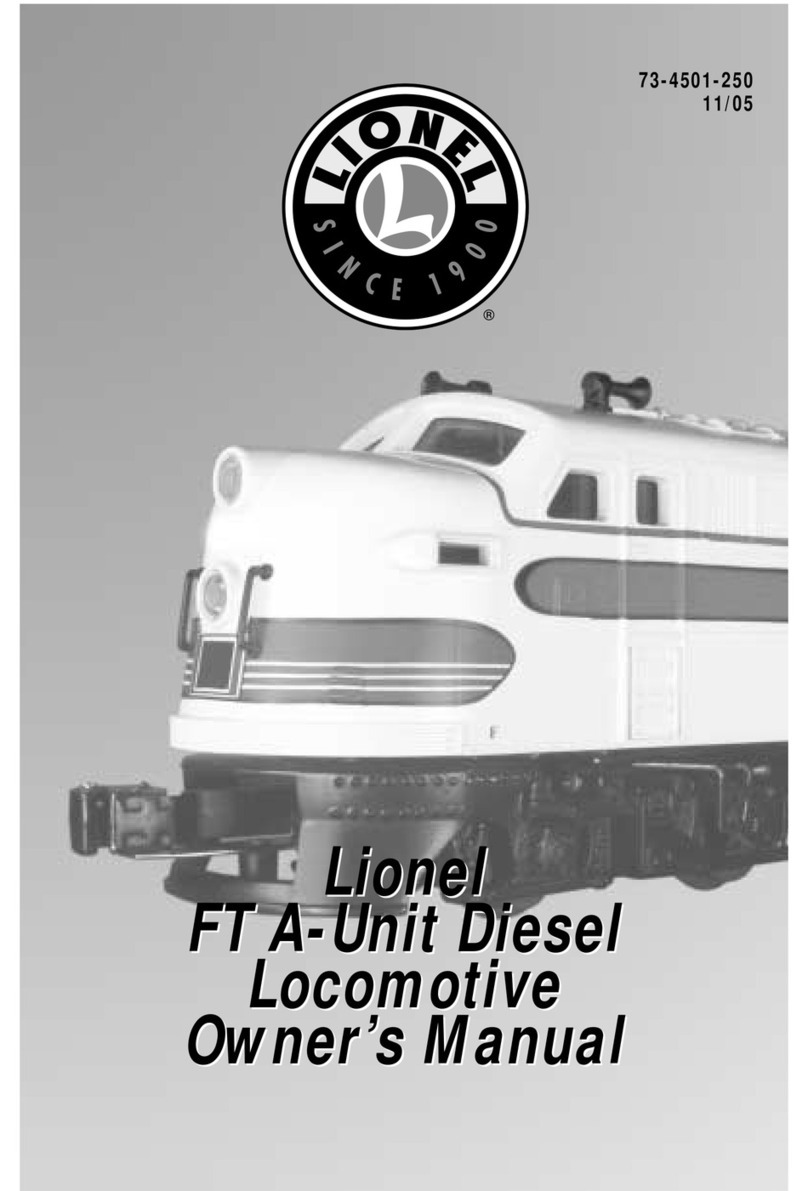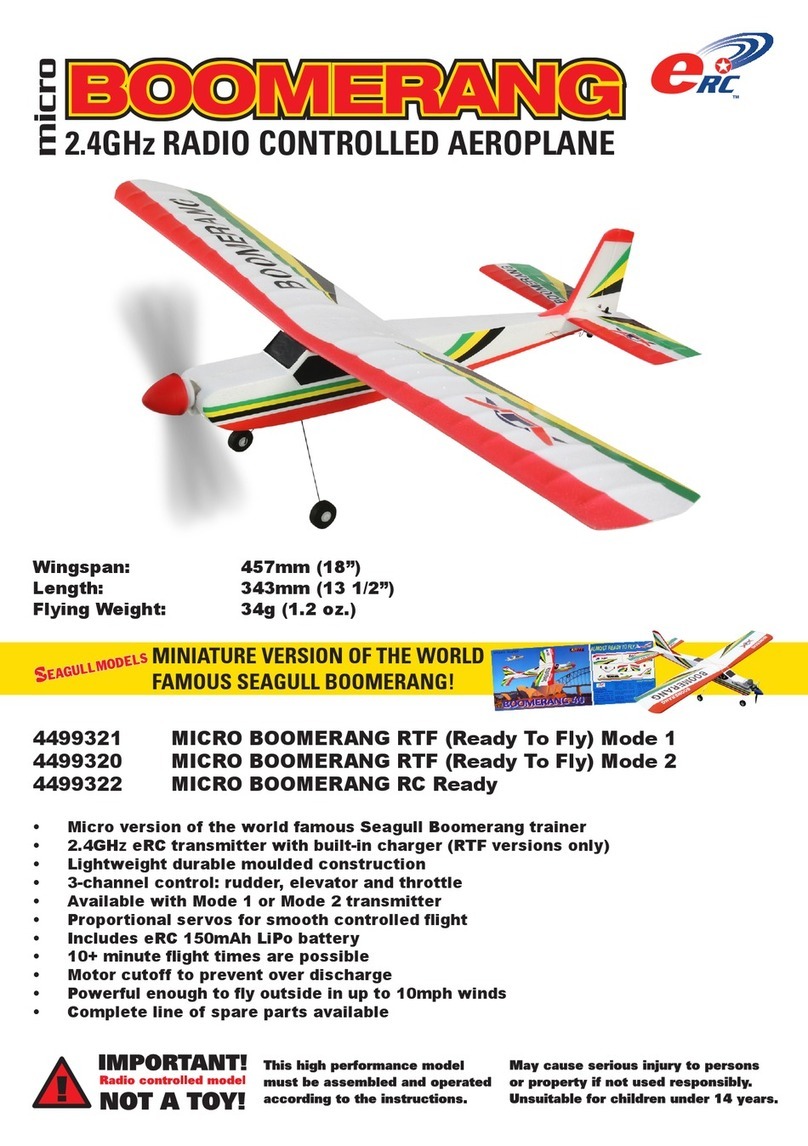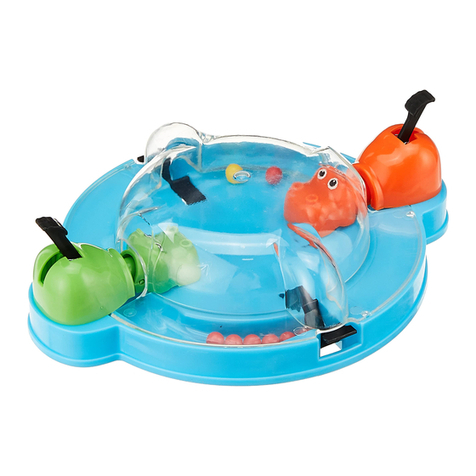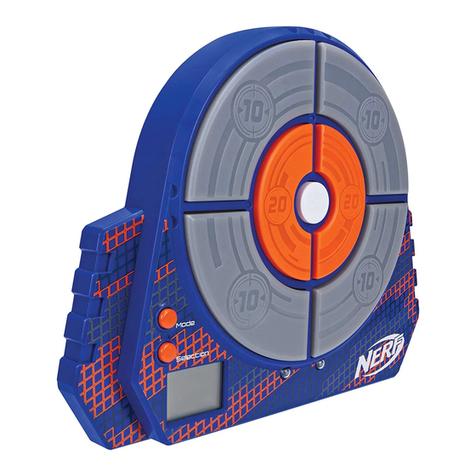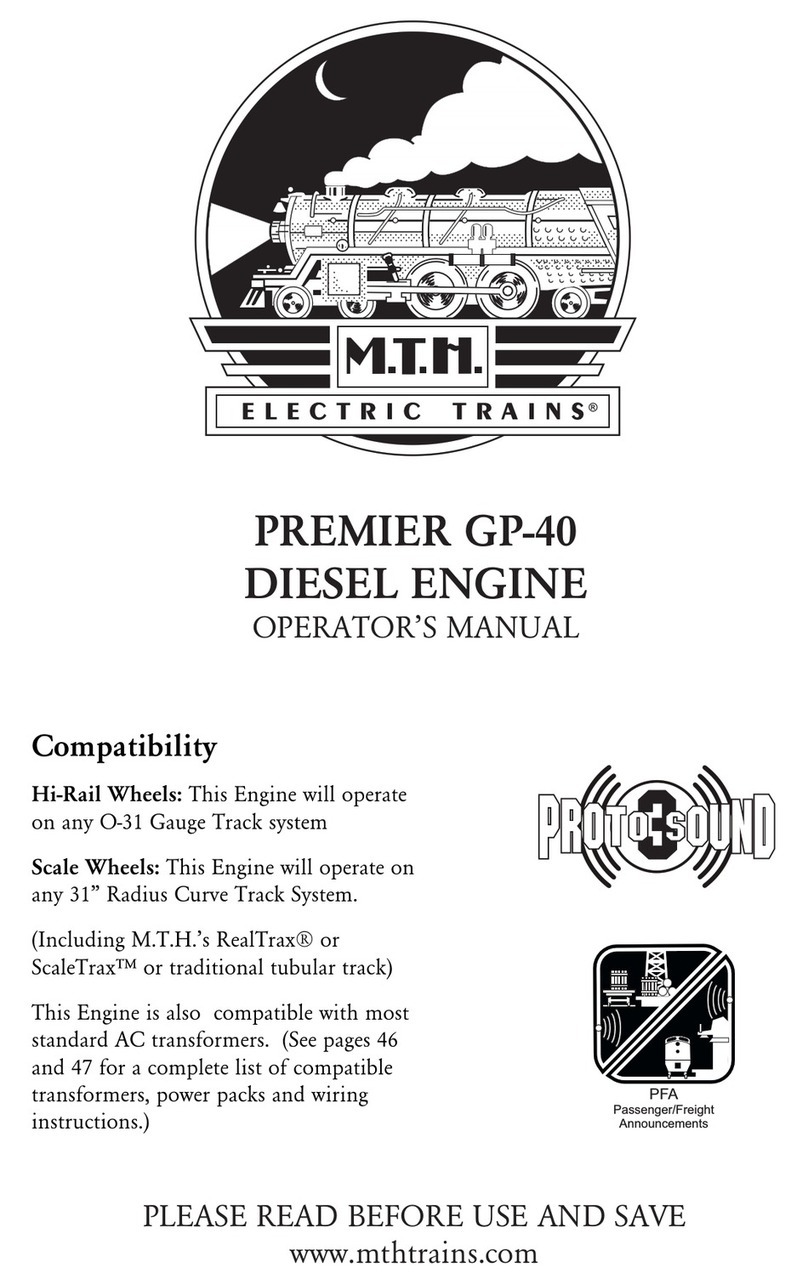RYAN NAVION Instruction Manual.
20
7) Check the receiver antenna. It should
be fully extended and not coiled up inside the
fuselage.
5) If your radio transmitter is equipped
withdual rate switchesdouble checkthat they
are on the low rate setting for your first few
flights.
6) Check to ensure the control surfaces
are moving the proper amount for both low
and high rate settings.
8) Properly balance the propeller. Anout
of balance propeller will cause excessive vi-
bration which could lead to engine and/or air-
frame failure.
We wish you many safe and enjoyable
flights with your RYAN NAVION.
4) Check the control surfaces. All should
move in the correct direction and not bind in
any way.
3) Double check the balance of the air-
plane. Do this with the fuel tank empty.
2) Check every bolt and every glue joint
in the RYAN NAVION to ensure that
everything is tight and well bonded.
1) Completely charge your transmitter
and receiver batteries before your first day of
flying.
PREFLIGHT CHECK.
D) Check the throttle. Moving the throttle
stick forward should open the carburetor bar-
rel. Ifitdoesnot,fliptheservoreversingswitch
on your transmitter to change the direction.
C) Check the rudder. Looking from be-
hindthe airplane, move the rudder stick tothe
right. Theruddershould move tothe right. If it
does not, flip the servo reversing switch on
your transmitter to change the direction.
E) From behind the airplane, look at the
ailerononthe right wing half. Movetheaileron
sticktotheright. Therightaileronshouldmove
upand the otheraileronshould movedown. If
it does not, flip the servo reversing switch on
your transmitter to change the direction.
B) Check the elevator first. Pull back on
theelevator stick. The elevator halves should
move up. If it they do not, flip the servo re-
versing switch on your transmitter to change
the direction.
Check the operation and direction of the
elevator, rudder, ailerons and throttle.
FLIGHT PREPARATION.
A) Plug in your radio system per the
manufacturer's instructions and turn every-
thingon.
10.5cm.
CONTROL THROWS.
Ailerons: 12 Low rate 15 High rate
Elevator: 10 Low rate 12 High rate
Rudder: 15 Low rate 20 High rate
2) If the nose of the plane falls, the plane
is nose heavy. To correct this first move the
battery pack further back in the fuselage. If
this is not possible or does not correct it, stick
small amounts of lead weight on the fuselage
sides under the horizontal stabilizer. If the tail
of the plane falls, the plane is tail heavy.
Tocorrect this, movethe battery andreceiver
forward orif this is not possible, stick weight
ontothefirewalloruseabrassheavyhubspin-
nerhub. Whenbalanced correctly, theairplane
shouldsitlevelorslightly nose down whenyou
lift it up with your fingers.





















